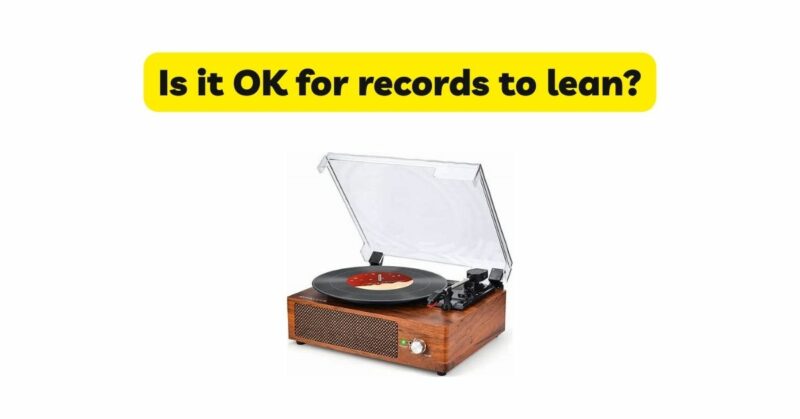Vinyl records are cherished by music enthusiasts for their unique sound quality and tactile experience. Proper storage and care are essential to maintain the integrity and longevity of a vinyl collection. One common question that arises among collectors is whether it is acceptable for records to lean or be stored at an angle. In this article, we will delve into the potential effects of leaning records and provide guidance on the best practices for storing vinyl records.
Section 1: Understanding the Structural Composition of Vinyl Records
To comprehend the impact of leaning records, it is important to understand the structural composition of vinyl records. Vinyl records are typically made of polyvinyl chloride (PVC), a flexible thermoplastic polymer. The audio information is etched into the record’s surface, which consists of grooves that guide the stylus during playback. The record’s structural integrity is crucial for preserving the quality of the grooves and preventing warping or damage.
Section 2: The Potential Risks of Leaning Records
2.1 Warping and Deformation: Leaning records can increase the risk of warping and deformation. The weight of the records can cause them to bend or warp when leaning against one another or against a surface. Warped records can lead to tracking issues, distortion in sound reproduction, and an overall compromised listening experience.
2.2 Groove Damage: When records lean against each other, there is a higher likelihood of the grooves coming into contact. This contact can result in scratches, scuffs, or even the transfer of debris from one record to another. Any damage to the grooves can adversely affect playback quality and introduce audible flaws.
2.3 Stability and Balance: Leaning records compromise the stability and balance of the collection. A leaning stack of records is more prone to toppling over, potentially causing damage not only to the leaning records but also to adjacent ones. Maintaining stability is crucial to prevent accidents and maintain the longevity of the collection.
Section 3: Best Practices for Storing Vinyl Records
3.1 Vertical Storage: The ideal storage position for vinyl records is vertically, similar to how books are stored on a shelf. Vertical storage minimizes the risk of warping, groove damage, and instability. Records should be placed snugly upright, with enough space to prevent them from leaning against each other.
3.2 Supportive Record Dividers: Utilizing supportive record dividers or bookends is an effective way to keep records in an upright position. These dividers maintain separation between records and provide stability to the collection. Ensure that the dividers are appropriately sized and fit the records snugly to prevent leaning or shifting.
3.3 Use Record Storage Boxes or Shelves: Investing in record storage boxes or shelves designed specifically for vinyl records is a wise choice. These storage solutions provide a secure and stable environment for the collection. Ensure that the boxes or shelves are sturdy, properly sized, and offer adequate support to prevent leaning or stacking.
3.4 Avoid Extreme Temperatures and Humidity: Proper environmental conditions are crucial for vinyl record storage. Extremes in temperature and humidity can lead to warping, mold growth, or degradation of the record material. Store records in a cool, dry place away from direct sunlight and sources of heat or moisture.
Section 4: Display Considerations
4.1 Record Frames or Display Stands: If you choose to display your vinyl records, consider using record frames or display stands specifically designed for this purpose. These display options securely hold the record in place, ensuring it remains in an upright position without leaning or warping.
4.2 Wall-Mounted Shelves: Wall-mounted shelves provide an excellent option for displaying records while maintaining their stability. These shelves keep the records upright and prevent leaning or stacking.
Conclusion:
Leaning records can pose risks to the structural integrity and playback quality of vinyl collections. Understanding the potential consequences of leaning and implementing proper storage practices is crucial for maintaining the longevity and preserving the quality of your vinyl records. By storing records vertically, utilizing supportive dividers, and maintaining stable environmental conditions, you can safeguard your collection from warping, groove damage, and instability. Remember, proper storage and care are paramount to enjoying the enduring pleasure of vinyl records for years to come.

